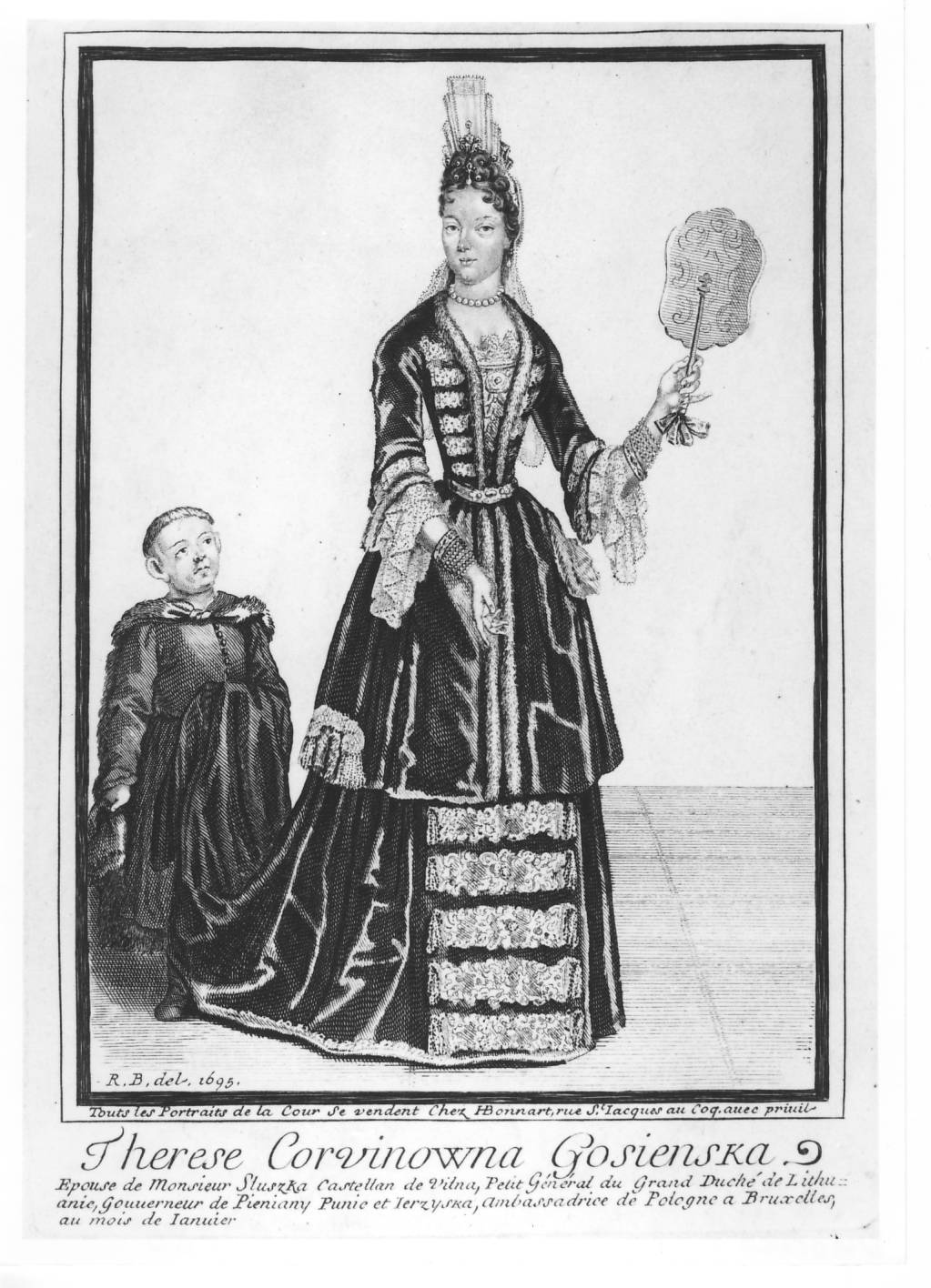
Court fashion, above all ladies’ fashion, in the seventeenth-century Poland was profoundly influenced by Paris and Versailles. Naturally, French ladies’ fashion evolved with time, but exclusively in details.
Until the 1660s the most significant novum was the rejection of side hoops broadening the figure at the hips. In 1650–1700 the bodice became longer and slimmer. Two-piece dresses appeared, composed of a skirt and a cabacium, i.e. a short-sleeve brassiere elongated in front with a V shape bottom and functioning as a corset. The cabacium exposed sleeves of the shirt, which in the court version was decorated with a double pleated lace ruffle. The point of gravity was gradually shifted to the bosom; the necklines were so low that a dress would start slipping off a woman’s shoulders. This fact triggered off fierce criticism of Polish moralizers. Following the French pattern, dresses were decorated with loads of ribbons tied in loops, knots and bows (called gallants) sewn onto the entire front of the brassiere and onto the sleeves. In the 1680s the skirt open in front was being swagged high on the hips in such a way that the entire front and the sides were now exposed, while the draping – quasi tiurniura – accentuated the hips and the buttocks. The V-shaped corset of an upgraded construction no longer flattened the breasts but had a push-up effect. Trendy clothing called for a new posture: the body was now shifted forward, with the protruding bosom counterbalanced by the back of the skirt, additionally accentuated by draping and the train. When high-heeled court shoes were introduced, the backbone became straightened, the bosom protruded to the front and the buttocks to the back. Slenderness and lengthening of the female figure was matched by shoes with pointed toes and a high trimming of the head called fontanges as well as piled-up hairstyles, which only recently tended to be rather wide and have curls protruding to the sides.
The new shaping of the female figure, in line with the late seventeenth-century French and Polish fashion trends, is illustrated by the copperplate engraving depicting Teresa Sapieha née Gosiewska (died in 1708), former wife of Józef Słuszka, Polish ambassador to Brussels. The print represents a typical example of la gravure de la mode genre and was made in Paris in 1695 based on a drawing by Robert Bonnart. It was sold in the printing shop of Henri Bonnart, Robert’s brother. The model’s dress attracts the viewer’s attention by fashionable lace engageantes (ruffles complementing the cuffs), pearl jewellery and a flat fan mounted on a long handle. The train of the dress is held up by a young page or a dwarf in Polish dress. According to Jakub Łącznowolski’s satiric work, already in 1678 it was trendy for women in Poland to have their long trails held up by dwarfs or children dressed after the Polish, Hungarian and Turkish fashion.
An anonymous French engraver, based on a drawing by Robert Bonnart, print shop of Henri Bonnart in Paris: Portrait of Teresa Sapieha née Gosiewska, copperplate engraving, 1695.
We would like to inform that for the purpose of optimisation of content available on our website and its customisation according to your needs, we use information stored by means of cookies on the Users' end devices. You can control cookies by means of your Internet browser settings. Further use of our website without change of the browser settings means that you accept the use of cookies. For more information on cookies used by us and to feel comfortable about this subject, please familiarise yourselves with our Privacy Policy.
✓ I understand